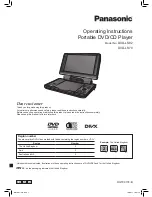
TP-6727 10/11
19
Section 2 Open Units
In cold climate interior installations using controlled
recirculation to recover heat, install thermostatically
activated louvers and fans to prevent the generator set
and engine room from overheating.
Electric louvers are usually connected to the optional
generator set run relay.
Typically, the louvers are
energized to open when the generator set is operating.
However, some louvers are energized to close and
when deenergized are spring-actuated to open when
the generator set is operating.
Filters.
Install a furnace-type or similar filter in the inlet
opening if the generator set operates in an atmosphere
highly contaminated with impurities such as dust and
chaff.
Air restrictions.
When using a filter, screen, or other air
restriction, increase the inlet opening size by the
following amounts to compensate for diminished
airflow:
D
Louvers
:
Enlarge the opening 50%.
D
Window screening: Enlarge the opening 80%.
D
Furnace-type filters: Enlarge the opening 120%.
2.2.2
Cooling Air Requirements
The generator set is equipped with a unit-mounted
radiator common cooling system. Figure 2-1 shows a
typical unit-mounted radiator installation.
Note the
direction of airflow and refer to the figure as needed
during installation.
Use ductwork to direct airflow.
Direct the radiator air
outside the room or enclosure using sheet metal
ductwork with structural supports. Keep ductwork as
short,
straight,
and
unobstructed
as
possible.
Combined static pressure restrictions greater than
0.12 kPa or 13 mm (0.5 in.) water column on the radiator
inlet and outlet openings cause reduced airflow and
contribute to overheating especially in high ambient air
temperatures. Use heavy canvas, silicone rubber, or
similar flexible material for the connection between the
radiator duct flange and the ductwork to prevent noise
and vibration transmission.
Outlet and inlet location and sizing.
Size the outlet
duct area 150% larger than the radiator duct flange
area. Size the inlet air opening at least as large but
preferably 50% larger than the outlet.
If screens, louvers, or filters are used on either the inlet
or outlet, increase the inlet or outlet size according to the
recommendations given in Section 2.2.1, Installation
Considerations.
Since the exhaust air of larger units is both high volume
and high velocity, direct the exhaust flow away from
areas occupied by people or animals.
Louvers.
Design temperature-controlling louvers to
prevent air inlet restrictions and air pressure reductions
inside
the
building.
Low
building
pressure
can
extinguish pilot lights on gas-fired appliances or cause
problems with the building ventilation system.
Additionally, bringing large quantities of winter air into a
building wastes building heat and risks frozen water
pipes in normally heated spaces. Use dampers and
controlled air outlet louvers as shown in Figure 2-6 to
eliminate these problems and allow recovery of engine
heat to reduce building heat loss. Close the louvers to
the exterior and open the interior louvers when the
outdoor temperature is below 18--21
°
C (65--70
°
F).
Reverse
the
louver
settings
when
the
outdoor
temperature is above 21--24
°
C (70--75
°
F).
3
1
2
5
6
4
TP-5700-4
1. Exterior
2. Interior
3. Air outlet duct
4. Generator set
5. Dampers
6. Controlled air outlet louvers
Figure 2-6
Air Control Louvers
2.3 Exhaust System
Carbon monoxide.
Can
cause
severe
nausea,
fainting, or death.
The
exhaust
system
must
be
leakproof and routinely inspected.
WARNING
Summary of Contents for 15REYG
Page 1: ...Commercial Generator Sets Models 15REYG 30REYG TP 6727 10 11c Installation...
Page 16: ...TP 6727 10 11 16 Section 1 General Notes...
Page 44: ...TP 6727 10 11 44 Section 5 Controller Notes...
Page 48: ...TP 6727 10 11 48 Section 6 Generator Reconnection Notes...
Page 64: ...TP 6727 10 11 64 Notes...
Page 65: ...TP 6727 10 11 65 Notes...
Page 66: ...TP 6727 10 11 66 Notes...
Page 67: ......
















































